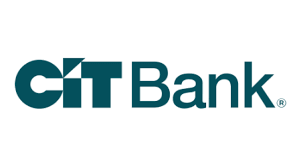Here's How Much Money the Average 35-Year-Old Has in the Bank
KEY POINTS
- The median savings account balance for adults aged 35 to 44 is $7,500, according to The Motley Fool Ascent's research.
- Increasing income and reducing spending could free up additional cash for savings.
- Choosing the right bank accounts could also help you keep more of what you earn.
Everyone wants a large savings account balance. It makes handling emergencies easier and it helps you achieve your long-term goals. But it's not easy for the average person to pull off.
Even the typical 35-year-old who's been in the workforce for several years doesn't have as much in the bank as you might expect. Below, we'll look at their median bank account balance and how you can beat it.
How much does the average 35-year-old have in their bank accounts?
A quick clarification before we get to the data: When most people say "average," what they're really talking about is the median (the middle point of a data set). It's largely considered to be more useful when talking about personal finances than the true average, which is where you add up every data point and divide by the number of data points. Averages are easily skewed by large numbers, so we'll be talking about median figures here.
The median transaction account balance for adults between the ages of 35 and 44 is $7,500, according to The Motley Fool Ascent's research on average savings account balances.
Our Picks for the Best High-Yield Savings Accounts of 2024
|
Capital One 360 Performance Savings

APY
4.25%
Rate info
See Capital One website for most up-to-date rates. Advertised Annual Percentage Yield (APY) is variable and accurate as of April 11, 2024. Rates are subject to change at any time before or after account opening.
Min. to earn
$0
Open Account for Capital One 360 Performance Savings
On Capital One's Secure Website. |
APY
4.25%
Rate info
See Capital One website for most up-to-date rates. Advertised Annual Percentage Yield (APY) is variable and accurate as of April 11, 2024. Rates are subject to change at any time before or after account opening.
|
Min. to earn
$0
|
|
CIT Platinum Savings

APY
4.85% APY for balances of $5,000 or more
Rate info
4.85% APY for balances of $5,000 or more; otherwise, 0.25% APY
Min. to earn
$100 to open account, $5,000 for max APY
Open Account for CIT Platinum Savings
On CIT's Secure Website. |
APY
4.85% APY for balances of $5,000 or more
Rate info
4.85% APY for balances of $5,000 or more; otherwise, 0.25% APY
|
Min. to earn
$100 to open account, $5,000 for max APY
|
|
American Express® High Yield Savings

APY
4.25%
Rate info
4.25% annual percentage yield as of September 12, 2024
Min. to earn
$0
Open Account for American Express® High Yield Savings
On American Express's Secure Website. |
APY
4.25%
Rate info
4.25% annual percentage yield as of September 12, 2024
|
Min. to earn
$0
|
However, it's worth noting that 35-year-olds are on the lower end of this age range. Given that average bank account balances tend to rise along with age, it's likely that, with a further breakdown of data, we might find that 35-year-olds specifically have a slightly lower median balance than this.
It's also worth calling out that these aren't just savings account figures. These represent all the money in transaction accounts -- checking accounts, savings accounts, money market accounts, call accounts, and prepaid debit cards. So while some of this money may be allocated for savings, there's also a significant portion that likely flows in and out each month from earning income and paying bills.
How can you boost your bank account balances?
If you're at or above the median bank account balances outlined above, congratulations! If not, don't panic. You can try a few things to increase your wealth over time, like:
- Save more when possible: This is the most straightforward way to grow your wealth if you have extra cash on hand or can come up with some by reducing spending. Move this money to a savings account where it can earn you interest each month.
- Switch to an online bank: Online bank accounts usually don't charge monthly maintenance fees that eat into your savings. They also tend to offer above-average interest rates, so you can grow your wealth more quickly.
- Consider a side hustle: When reducing spending isn't feasible, increasing your income is another way to grow your wealth. Many side hustles these days enable you to work on your own schedule and from wherever you are, so you aren't limited to an office building or normal working hours.
- Pay down high-interest debt: Credit card debt can balloon quickly due to high interest charges, so it's best to tackle this first. Once it's paid off, building your savings will be easier.
Even taking the above steps, it will likely still take time to build up your savings. That's OK. Celebrate your milestones along the way and keep an eye out for new opportunities to grow your wealth.
Our Research Expert
We're firm believers in the Golden Rule, which is why editorial opinions are ours alone and have not been previously reviewed, approved, or endorsed by included advertisers. The Ascent, a Motley Fool service, does not cover all offers on the market. The Ascent has a dedicated team of editors and analysts focused on personal finance, and they follow the same set of publishing standards and editorial integrity while maintaining professional separation from the analysts and editors on other Motley Fool brands.
Related Articles
View All Articles